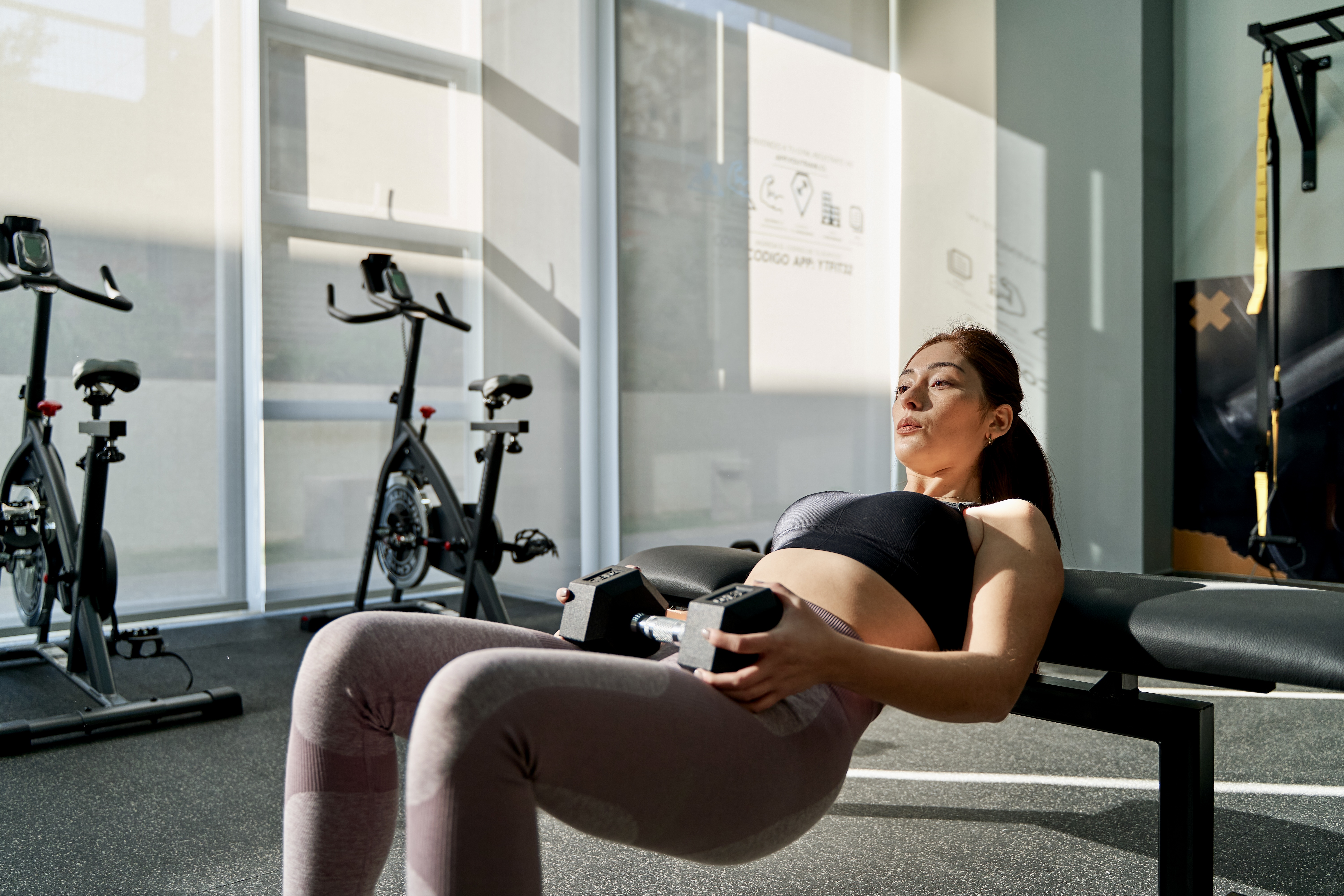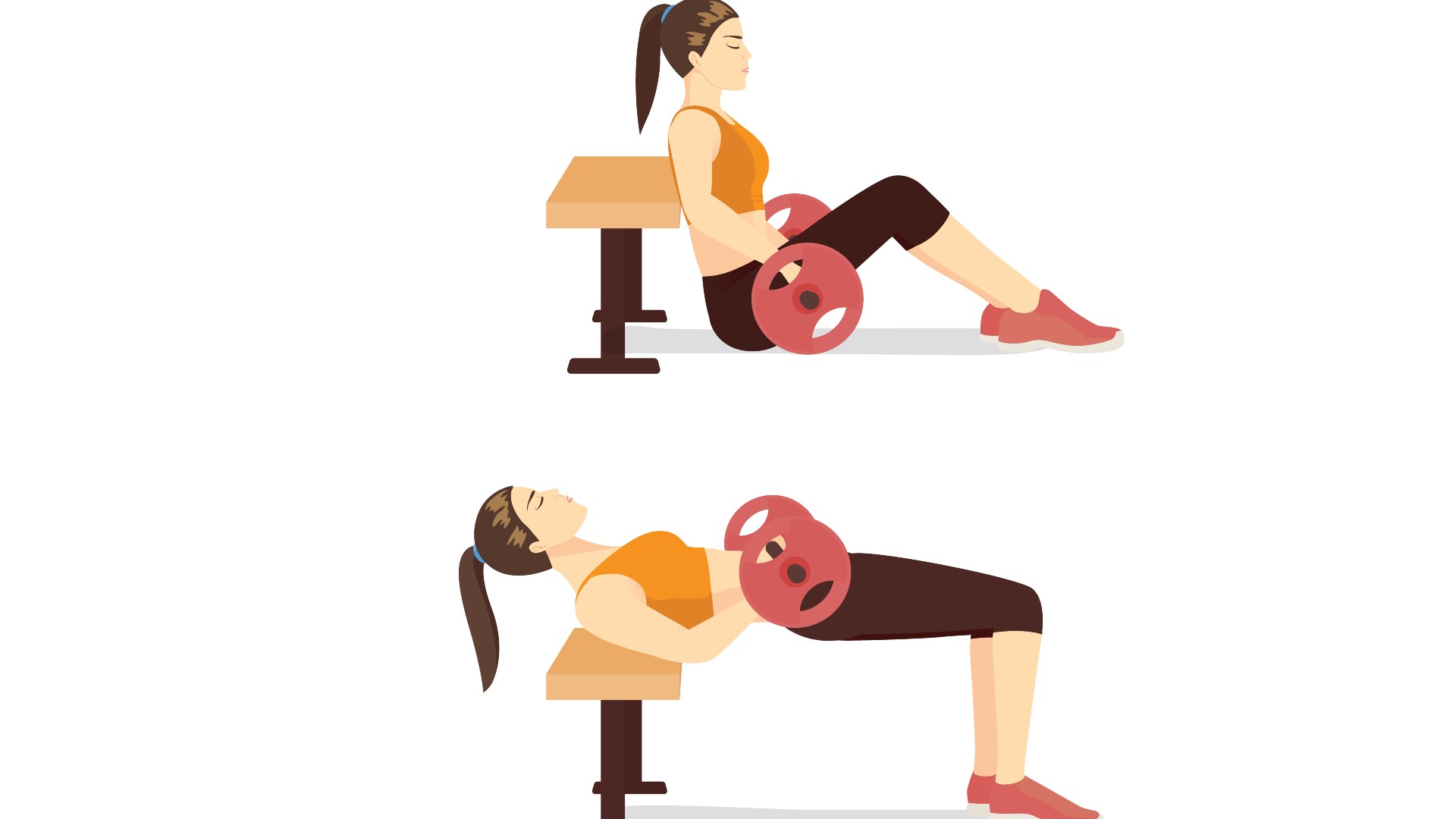
The hip thrust is a popular glute-growing exercise found in gyms everywhere. While the exercise can build strength and muscle definition in your glutes, it’s easy to get wrong and could lead to a lower back injury without good form.
Hip thrusts are pretty accessible. You can use the best adjustable dumbbells, kettlebells, and resistance bands to perform one, but the barbell hip thrust is arguably the most popular — and hardest — to master (in fact, I did hip thrusts every day for a week, and ouch). Whichever variation you choose, the hip thrust uses a hip extension to strengthen your gluteus maximus — the largest and strongest muscle in your body — alongside other muscle groups.
If you sit down for long periods, your hips will get tight and your glutes weaker. Tight hip flexors alongside weak glutes and hamstrings can lead to hip, knee, and ankle injuries, so it’s beneficial to strengthen the muscles around your hips and knees regularly.
A hip thrust is a brilliant option, so read on to find out how to nail it with proper form.
What do hip thrusts work?
The hip thrust is a powerhouse exercise, and so are your glutes, which form part of your network of core muscles. They work to keep your pelvis stable, rotate the hip joint, and support movement and balance. It’s the creation of the “Glute Guy” Bret Contreras, whose mission has been to grow the glutes of gym-goers everywhere — you can find his 7-minute resistance band glutes workout here.
The hip thrust primarily works your gluteus maximus, the muscle responsible for posture, alongside the gluteus medius and minimus. Although it’s the most powerful muscle in your body, the gluteus maximus is often underused and under-activated during exercise.
Looking to build strength, size, and power? Enter, the humble hip thrust.
Get instant access to breaking news, the hottest reviews, great deals and helpful tips.
It’s a brilliant exercise to bank. Hip thrusts also strengthen your hamstrings, quads, adductors (inner thighs), and core muscles, which work to keep your body stable. Even though exercises like squats and lunges work your glutes, anyone with a quad-dominant lower body will struggle to activate their hamstrings and glutes properly.
According to research, weak hamstrings and glutes could lead to sports-related injuries. So to achieve a well-rounded backside, a well-rounded leg day workout is necessary. Find some of the best ab exercises and hamstring workouts, like the cable pull through to round out your workout.
How to do hip thrusts

We cover how to do barbell hip thrusts below. The advanced lift allows you to add the most weight over time. Manipulating this variable is called progressive overload, which will help you build strength and muscles in your glutes.
Here’s how to do hip thrusts:
- Start with your back against a bench or box in line with your shoulder blades
- Plant your feet shoulder-width apart and place the barbell over your hips
- Rest your elbows against the box and keep your gaze forward
- Grip the bar and tuck your chin, then squeeze your core and inhale
- You exhale, drive through your heels, and thrust your hips upward with power
- Keep your pelvis, ribs, and chin tucked under, and squeeze your glutes at the top
- Slowly lower your hips back down
If you’re new to the exercise, practice a glute bridge to polish the technique first, then progress to light dumbbells or kettlebells. Most Olympic bars weigh 15-20kg, so you’ll need to check you can lift the bar efficiently before adding weight.
Practice with 3 to 4 sets of 8 to 12 unbroken reps if the goal is to build muscle. But if your goal is strength training, fewer reps and higher sets will help you develop power and strength in your glutes and hips.
Common hip thrust mistakes
Hip thrust: foot positioning
Positioning your feet too close together will turn the hip thrust into a quad-dominant exercise. Too far apart? Your hamstrings will take over the show. Just like Goldilocks, you want it just right.
I recommend a shoulder-width apart stance for optimal contraction of your glutes, but everyone is different, so test out what works best for you. I sometimes ask clients to hold a block widthways between their thighs to prevent their feet from moving or their knees from caving in.
Hip thrust: hip positioning
Overarching your back or dropping your hips too low can hurt your lower back. Ensure your core is fully engaged, keep your gaze forward, and tuck your chin, as this should prevent overarching.
Your thighs should be parallel to the floor at the top of the move, allowing you to draw a straight line from shoulder to knee with hips fully extended. If your hips droop too low, you might be lifting too heavy. Drop weight (and remove the ego!) to see if this helps. Try to thrust your hips with power, which will help you drive the bar upward and move through a full range of motion, allowing your glutes to engage fully.
More from Tom's Guide
- We tried Kim Kardashian’s glute workout
- This bodyweight Pilates ab workout for abs and glutes is killer
- You can build your glutes without weights
- These stretches for hip flexor pain are game changers.

Sam Hopes is a level 3 qualified trainer, a level 2 Reiki practitioner and fitness editor at Tom's Guide. She is also currently undertaking her Yoga For Athletes training course.
Sam has written for various fitness brands and websites over the years and has experience across brands at Future, such as Live Science, Fit&Well, Coach, and T3.
Having coached at fitness studios like F45 and Virgin Active and personal trained, Sam now primarily teaches outdoor bootcamps, bodyweight, calisthenics and kettlebells.
She also coaches mobility and flexibility classes several times a week and believes that true strength comes from a holistic approach to training your body.
Sam has completed two mixed doubles Hyrox competitions in London and the Netherlands and finished her first doubles attempt in 1:11.
